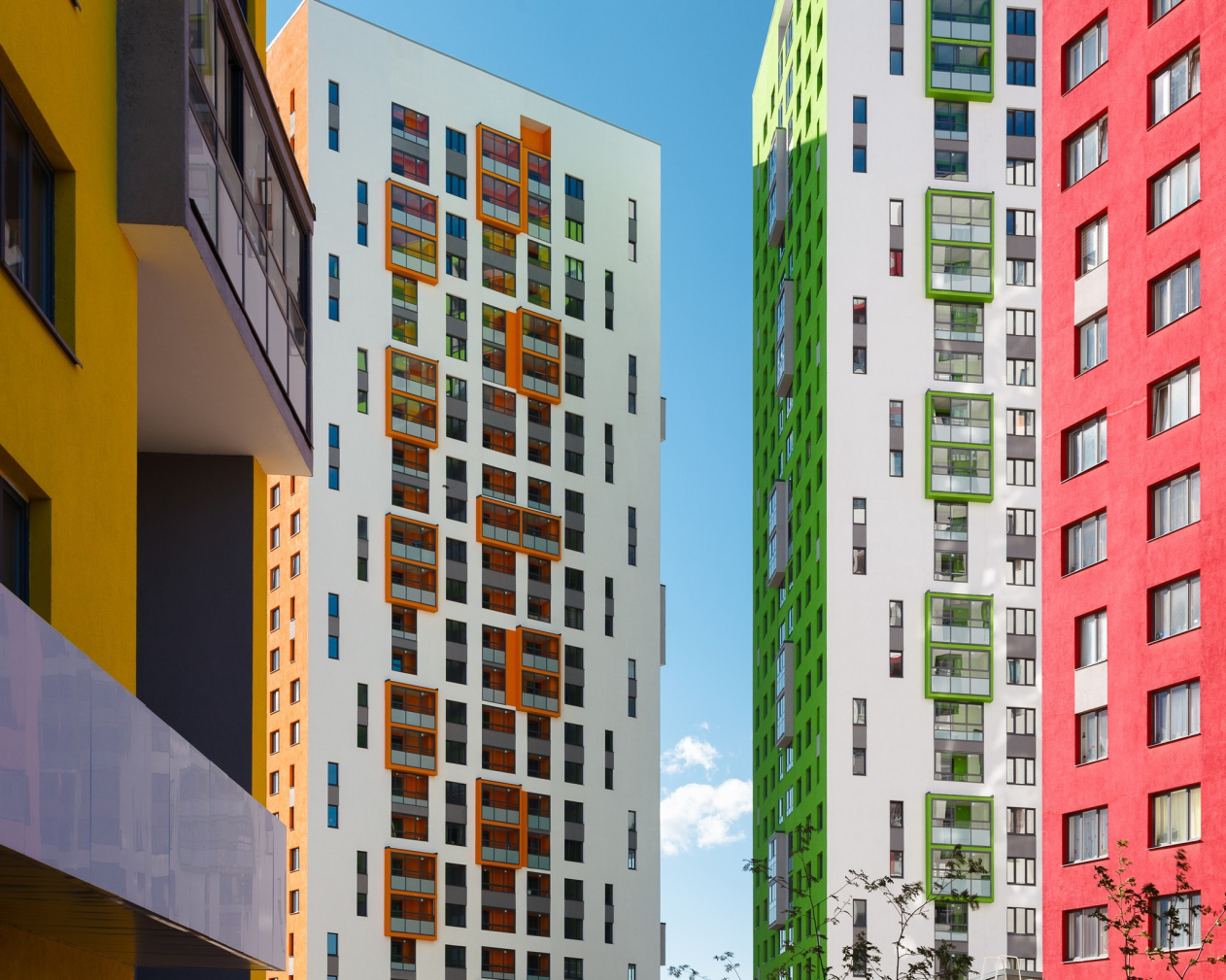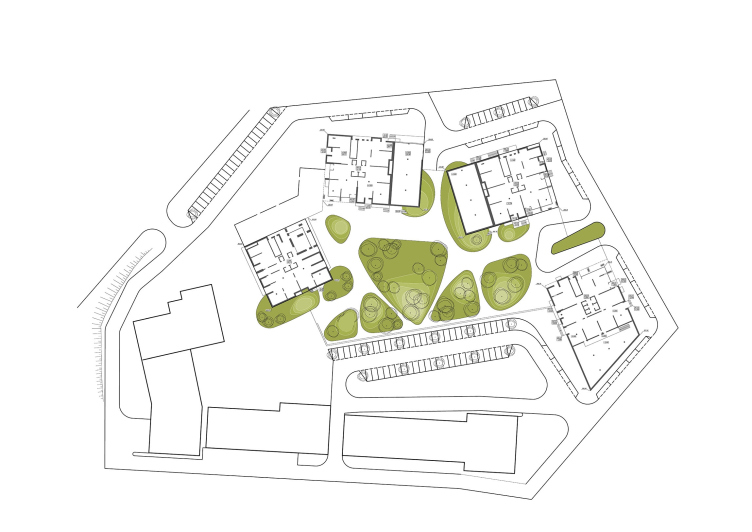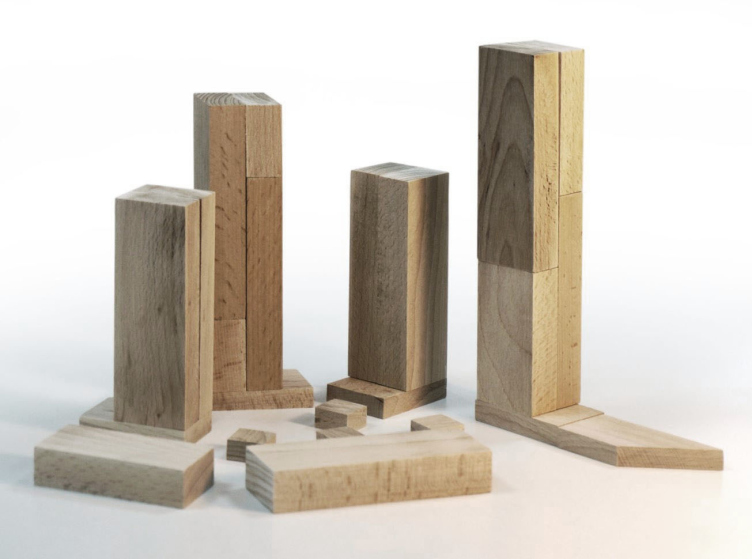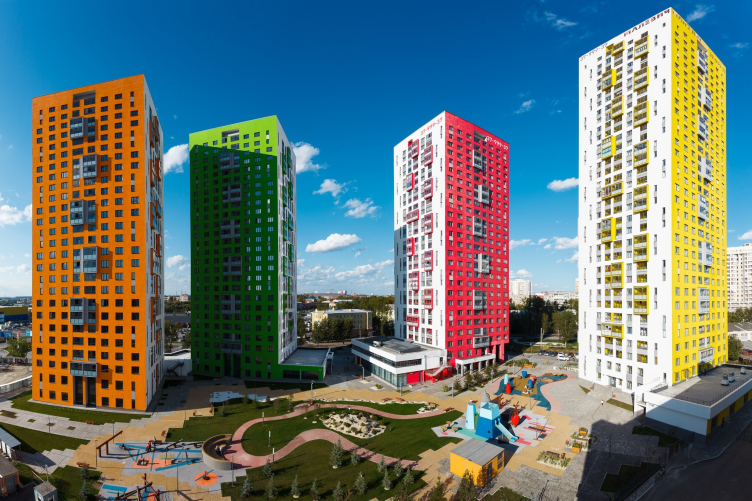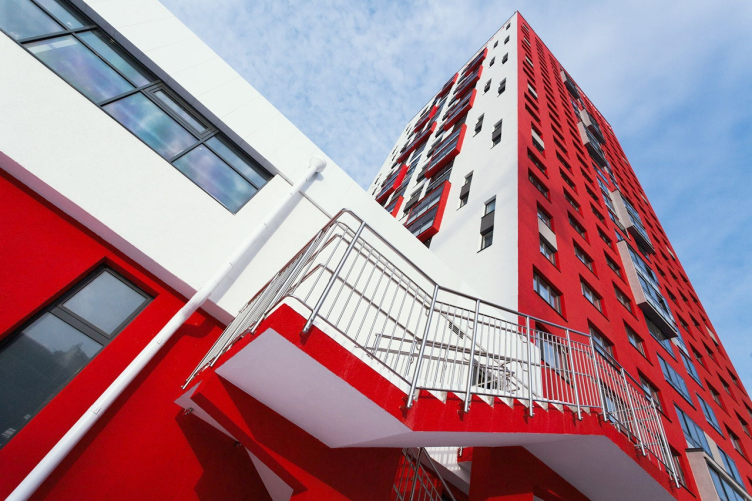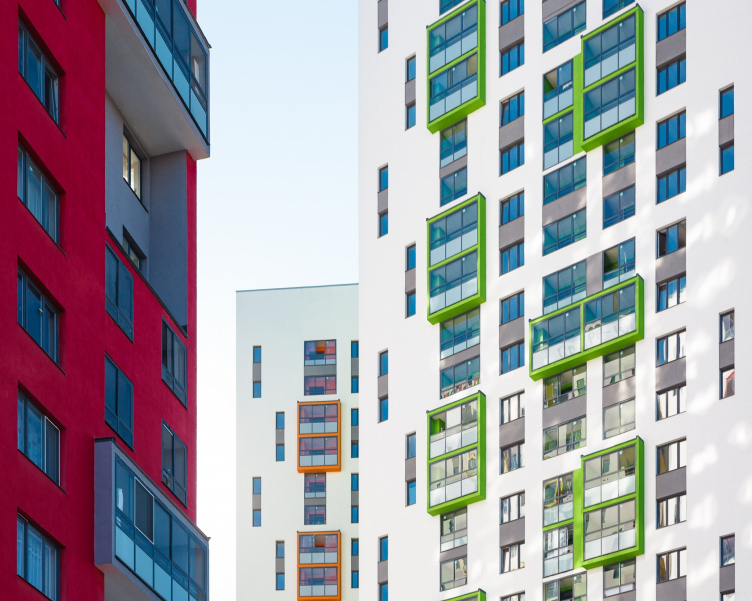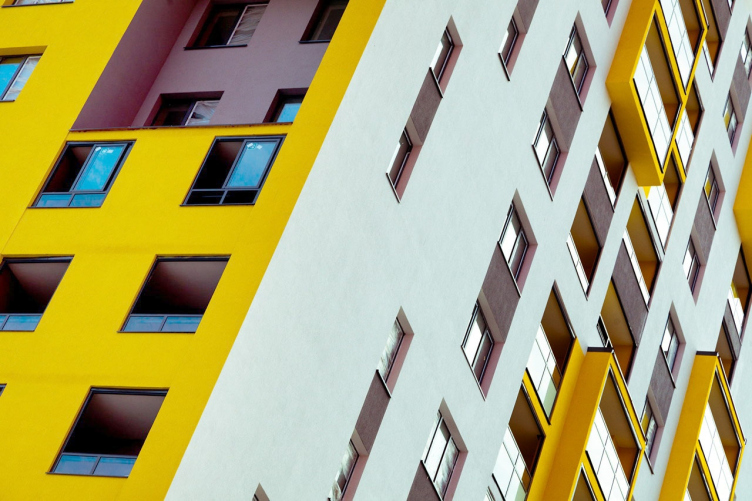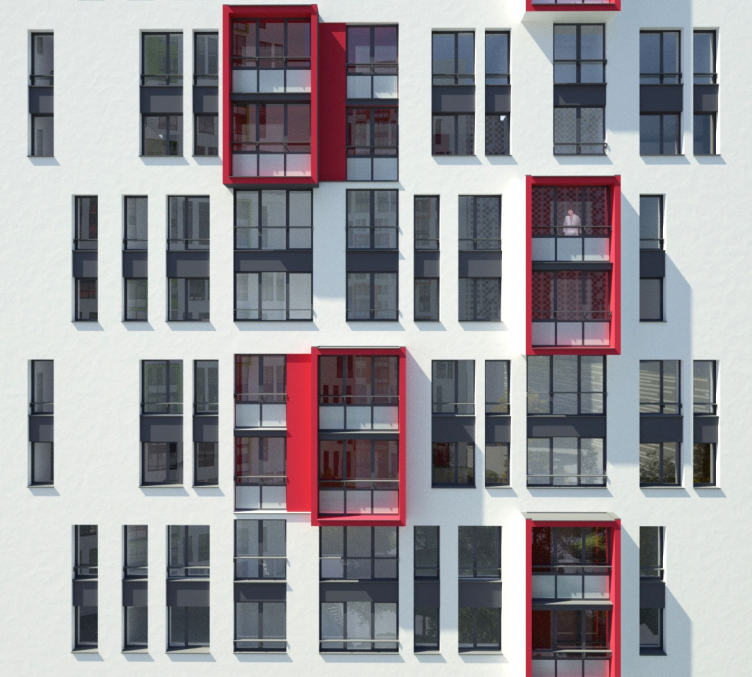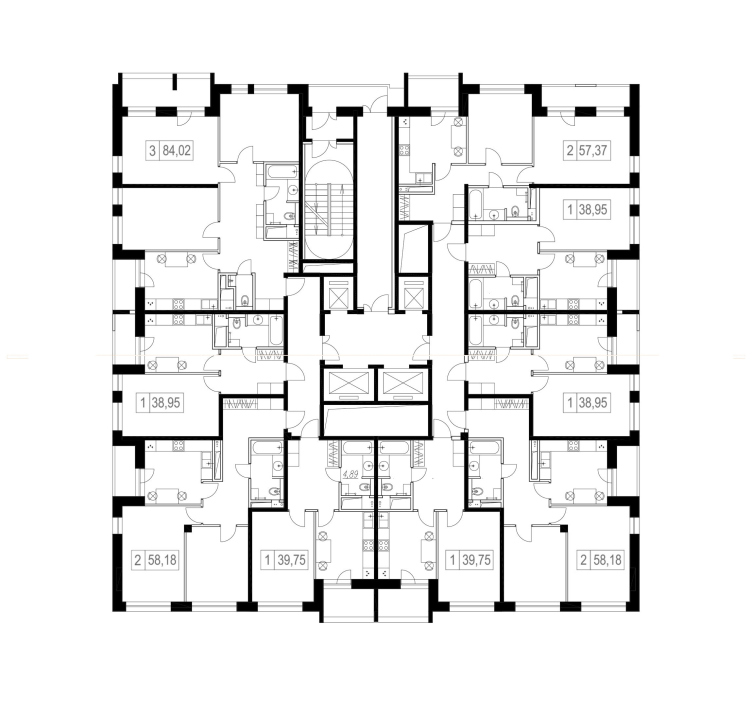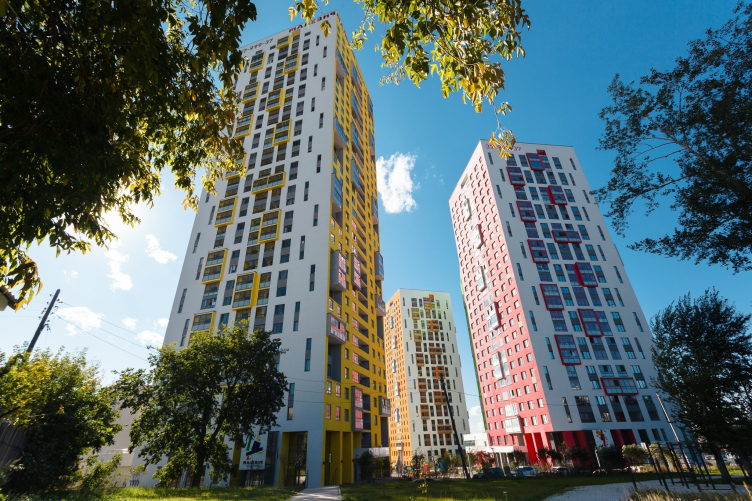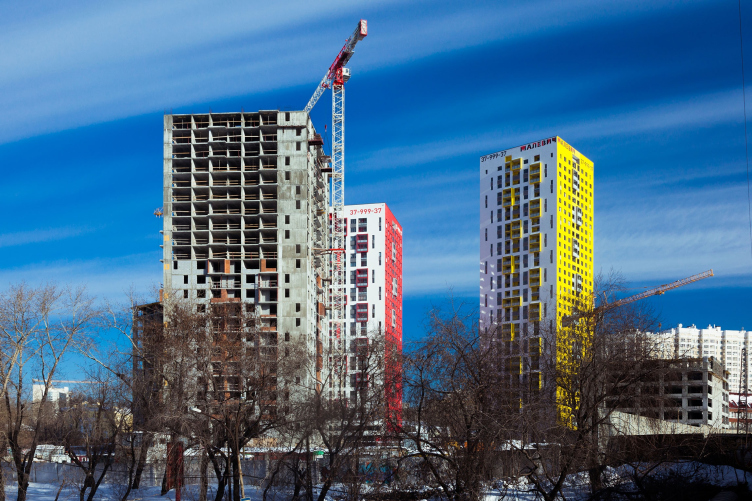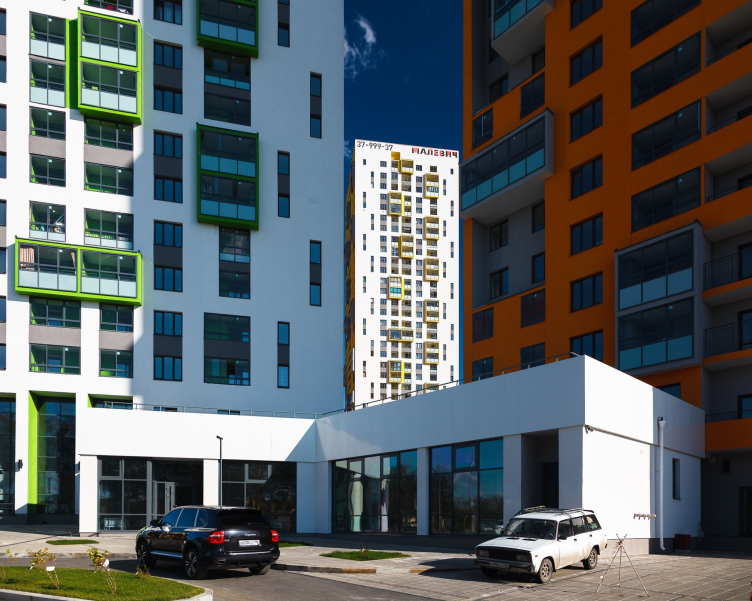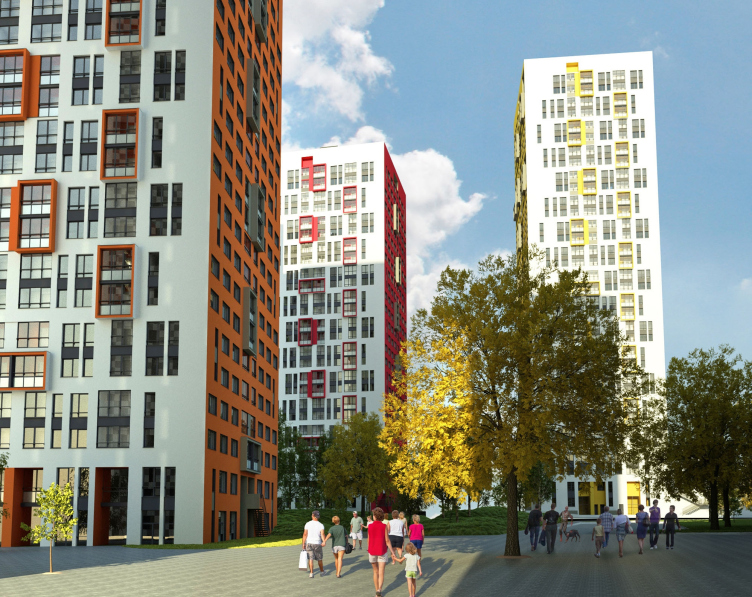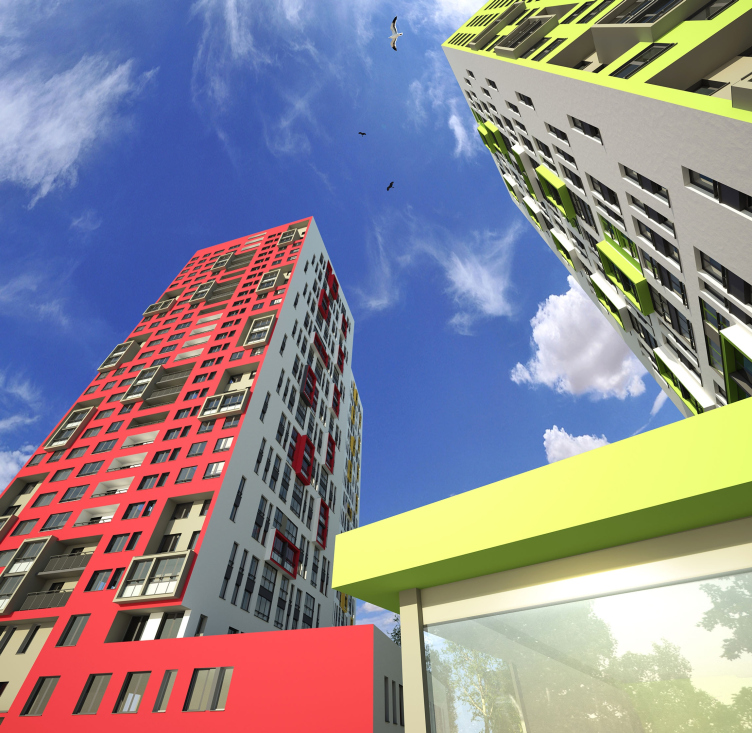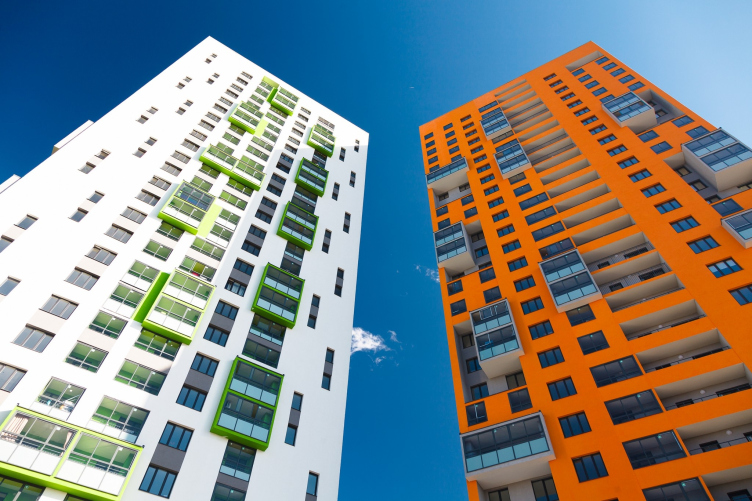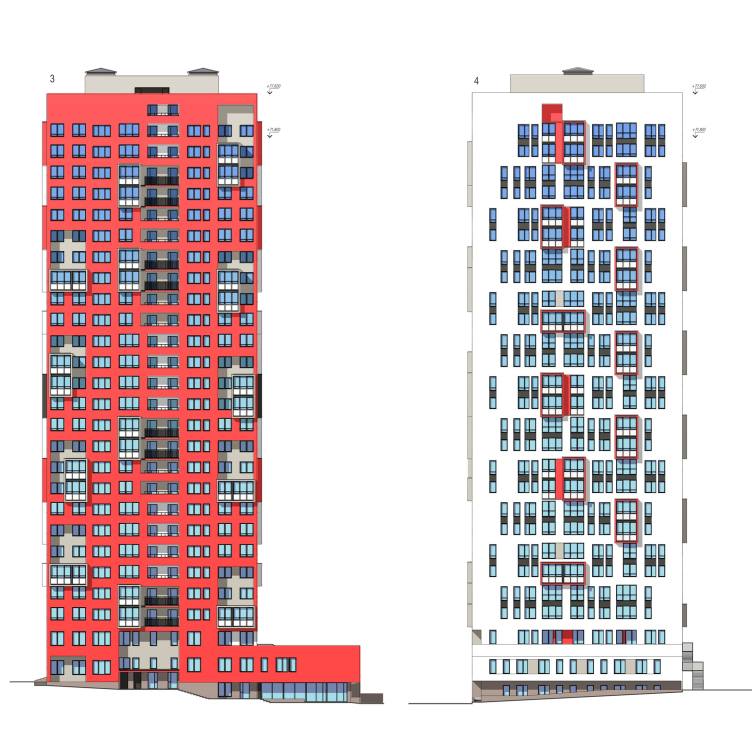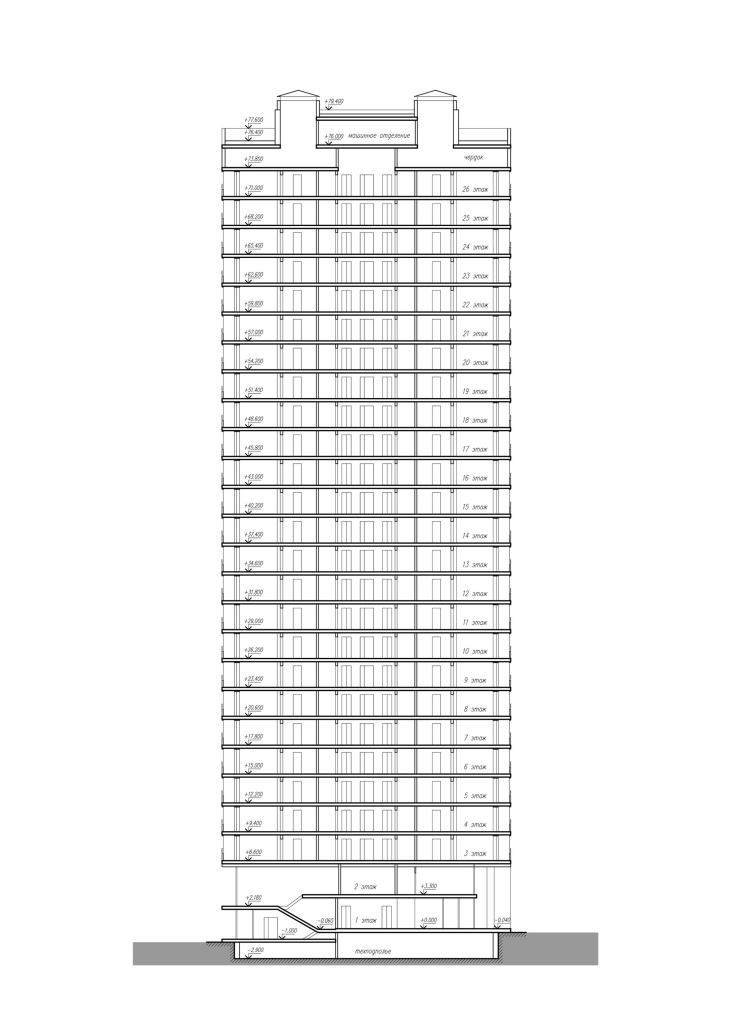The land site which was hitherto occupied by a bus storage facility was far from being the perfect place for residential construction for a number of reasons: its surroundings include the local railroad station, the Transsib pipeline, a large tram hub with a depot, and the traffic-overloaded Kosmonavtov Avenue that connects Ekaterinburg’s downtown area with the Uralmash district. All around, there are industrial parks, warehouses, and a water main that runs through the whole area from end to end. It seemed at first that meeting all the noise requirements and creating a comfortable lining environment in such surroundings was downright impossible. However, the proximity to the historical center of the city and the developed transportation infrastructure were enough to make the developer go through with the project and look for ways to solve the multiple issues. “Initially, we were very surprised ourselves just why our client would want to build a housing complex in such a place – it seemed to us that nobody would want to live here – shares the leader of the project, Evgeny Volkov – And now this place really came alive and even many of the employees of our firm bought apartments in the “Malevic” complex. And we would like to believe that to a large extent we deserve some credit for that”.
In order to address all the challenges, the architects quite unexpectedly refrained from implementing the closed-circuit layout, which almost became a cliché nowadays, and designed four “pencil” towers (one of them 33 stories high, the other 26 each), placing them in a loose manner in respect to one another. By doing that, the architects were able to solve the insolation issues, and avoid the impression of a “closed circuit” – the sky can be now seen from virtually any vantage point. At the same time, from the side of the railroad, the territory is fenced off by two parking lots. Plus – the broad podiums of the towers, which house the public spaces, shops, a fitness center, and even the office of the PRINZIP developers – all this put together helps to form a cozy vehicle-free yard, with greenery and a modern children’s playground.
"Malevich" housing complex. OSA. Photograph © Maxim Loskutov
"Malevich" housing complex © OSA architects
"Malevich" housing complex. Model © OSA architects
The contrastive and bright color solution based on alternation of white and colored façades sets the complex apart against the background of its rather bleak surroundings, and turns it into a town-planning accent clearly viewable from the railroad station side. The colored facets, turned differently in respect to the cardinal points, help to better perceive each of the volumes and make the composition more dynamic because it constantly changes depending on the position of the sun, ambient light, and the weather. The plastique of the façades is also created by the play of colors: at the red, yellow, green, and orange sides, some of the window apertures are grouped in twos and are highlighted in white; on the white sides it’s the other way around. Picturesquely scattered, there vertical and horizontal ledges and cutaways bring maximum diversity to the image of the complex, supporting the freedom of the overall composition and really put one in the mind of suprematist paintings. And even the balconies (and here each apartment has one) avoided the fate of being placed in a vertical row like the habitual boring “thermometer” pattern on the façade. At some places they turn out to be on a level with the main surface of the wall, and are virtually invisible from the outside, in some places they are sunken in, and at some places they actively protrude, enhancing the plastique play. And only the open overpass stanzas set the rigorous verticals on the north façades.
"Malevich" housing complex. OSA. Photograph © Maxim Loskutov
"Malevich" housing complex. OSA. Photograph © Maxim Loskutov
"Malevich" housing complex. OSA. Photograph © Maxim Loskutov
"Malevich" housing complex. OSA. Photograph © Maxim Loskutov
"Malevich" housing complex. OSA. Photograph © Maxim Loskutov
"Malevich" housing complex. OSA. Photograph © Maxim Loskutov
“Malevich” from the very start was marketed as a relatively inexpensive and accessible housing complex, hence the choice of the cost-efficient technology of a “wet façade” and smart slicing of the floors into relatively small apartments. On the plan, every tower is essentially an equilateral square, which, as the architects share, is rather an exception than a rule by Ekaterinburg’s standards. “For some reason, this city has always been fond of round houses, and, even if the house did have a square plan, it inevitably had rounded corners, balconies, or something like that – Evgeny Volkov explains – The thing is that in such “pinpoint” buildings as ours, when you have to slice the floor into small-sized apartments, you often run into difficulties with making your corner rooms accessible: in order to get to one, you need either a long corridor or a pass-through room. Either of the two solutions is unpopular with the customers, and this is why the designers usually try to increase the area of the lateral apartments and decrease the area of the corner ones, hence the “melted” rounded plan of the building. Our four “pencils”, however, do not have a single curve in them – only straight lines and right angles – and all the planning issues are solved by more subtle “nonlinear” planning ideas and smart inside zoning”. Meanwhile, the layout of the standard floor is truly effective: a compressed stairway nucleus, small corridors left and right of the elevator with emergency evacuation through the elevator hall, and the smartly configured residential cells, which, like pieces of a jigsaw puzzle, come together to form the desired perfect square.
"Malevich" housing complex. Floor plan © OSA architects
“We were simultaneously working on two similar-type housing complexes “Kamenny Ruchei” (“Stone Creek”) and “Malevich” – says the managing director of “OSA”, Stanislav Belykh – But the similar tasks that we had were handled by us in completely different manners: in the former case we did it by using a rigid orthogonal composition and a maximally reserved color solution, while in the latter case we did it in a more dramatic manner, with “scattered” high-rise volumes, and color as the key player in the composition. Such a versatile approach to one and the same problem is often applied in our company because it allows us to delve deeper into the situation and better satisfy the needs of the developer and the end consumer”.
"Malevich" housing complex. OSA. Photograph © Maxim Loskutov
"Malevich" housing complex. OSA. Photograph © Maxim Loskutov
"Malevich" housing complex. OSA. Photograph © Maxim Loskutov
"Malevich" housing complex © OSA architects
"Malevich" housing complex © OSA architects
"Malevich" housing complex © OSA architects
"Malevich" housing complex © OSA architects
"Malevich" housing complex © OSA architects

